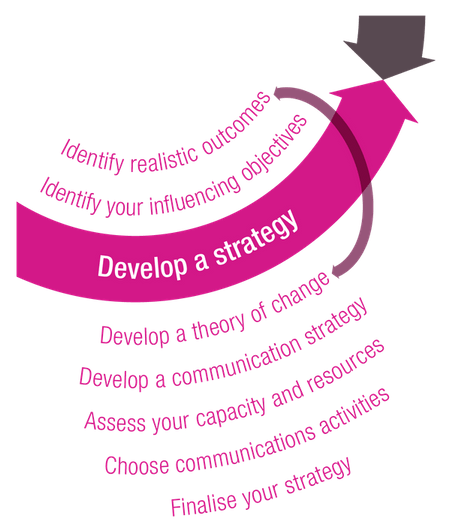Once you have defined the outcomes you are looking for, the next step is to think about how these are likely to come about. Having an idea of how change is likely to happen will help you identify entry points and opportunities for the kind of actions you ought to take to set change processes in motion.
There will be no general applicable models of how change happens – largely because there are many different viewpoints and ideas about it. Every context has its own history and its own particularities.
While there are some broad patterns, these are far from being fixed laws. Even an analysis of the past will be unlikely to be a definitive guide to how change might occur in future.
Some of the broad patterns derive from approaches to change in different academic disciplines like history, politics and sociology. So, for instance, historical analysis emphasises change through actors and structures; class and other social groups; cycles and crises; and reforms and revolutions.
Politics emphasises institutions and ideology; sociology focuses on social movements, worldviews, power and culture.
Other viewpoints argue that change arises because of seismic evolutionary shifts or coordinated action among individuals with the same core beliefs. Change may come about where advocates successfully connect the way a problem is defined and the policy solution to the problem or political climate surrounding their issue, or to the way policy options are framed or presented.
Change may also occur when individuals or groups work with those in power to make decisions or influence decision-making; or when there is collective action by members of a particular community who work to change the problems affecting their lives.
A theory of 'no-change'
There is currently a great deal of emphasis on theories of change and a proliferation of ways in which they are presented. In our experience, few of them give sufficient consideration to understanding the status quo and what a ‘theory of no change’ would look like.
But, given the difficulty of change in many contexts, especially institutional change, it is worth asking why change is unlikely to come about. Mapping out where actor incentives, interests and embedded power structures prevent change from taking place will provide a useful baseline against which you can assess what changes have happened, to support your monitoring and learning processes.
A force field analysis complemented by a fishbone diagram (Defining a problem) can be used to present an initial theory of no change. A more detailed analysis would build on this by analysing the complexity of the issue and the systemic political and institutional factors (Diagnosing complexity and uncertainty). The most detailed theory of no change would be done using a political economy analysis. There is a good deal of online guidance about how to do political economy analysis.
An initial theory of change
Having set out the expect to see, like to see and love to see outcomes in the previous exercise, you will be part way to developing a theory of how change happens. To help you approach an assessment of how specific changes may occur, we suggest you refer back to Diagnose the problem, to the analysis of why the problem persists and in particular the analysis of systemic factors.
For each stakeholder group it may be useful to consider how they would respond to socio-economic trends and unforeseen events.
All of this analysis can be drawn together into an initial theory of change. At this stage, the ‘theory’ you shape will be a hypothesis or set of hypotheses that needs to be revised and refined while you learn, interpret and adapt as your project or programme progresses. Eventually, this will enable you to build a more credible and robust ‘theory of change’.
Figure 6: Feedback loops in the ROMA cycle
